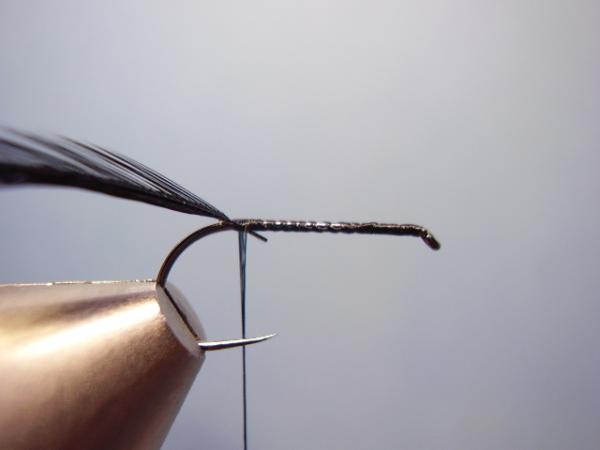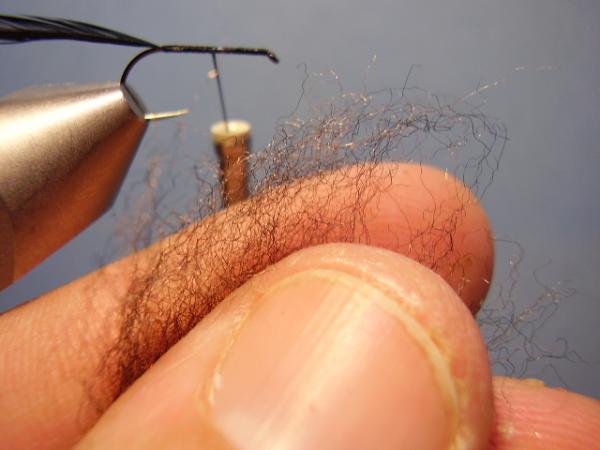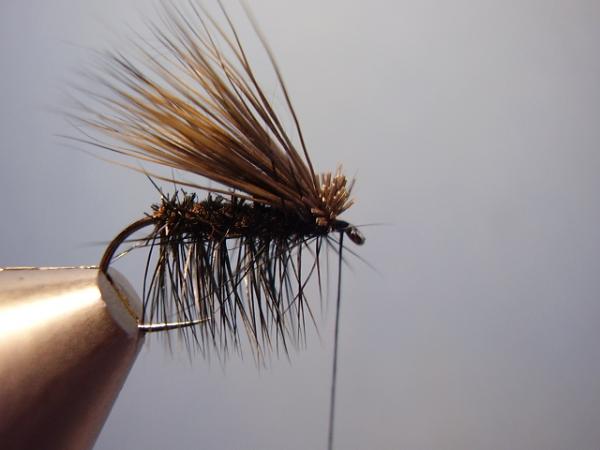Archives of Loren Williams Fly Tying Tutorials.
Grannom Elk Hair Caddis
Fly and Photos by Loren Williams
In the east, the Grannom Caddis (Brachycentrus americanus) is one of the earliest and densest hatches we see. I can recall numerous occasions on central Pennsylvania's Big Fishing Creek when the hatch would create dangerous driving conditions through the "Narrows" section of the stream due to the blanket hatch.
This moderate sized critter with it's dark body and wings is sometimes called a Black Caddis. Interestingly, when in flight the bug looks rather pale and moth like as do most caddis species, but at rest it truly is very dark.
The bug typically shows itself in the middle to last half of April on spring influenced streams and a bit later on freestone streams.
Imitating the adult can be important early in the hatch, but when the hatch is fully underway a surface imitation can be an exercise in frustration simply because so many naturals litter the surface. Oftentimes it is far better to fish subsurface with pupa or emerger imitation.
If you elect to imitate the adult caddisfly of this species, two effective patterns are the trusty Elk Hair Caddis created by Al Troth decades ago, and the newer variation of that theme called the X-Caddis. This tutorial will show you how to tie the Elk Hair Caddis to match this hatch. Note that the EHC can imitate any caddis species by changing the size and color.
Materials
Hook: Partridge SLD #12-#14
Thread: Black
Body: Very dark chocolate dubbing
Rib: undersized black hackle
Wing: Dark mottled deer hair
Head: Trimmed hair butts
Click photos to enlarge!

Mount the hook in your vise.

Start the jam knot behind the eye and lay a thread base down the shank ending just prior to the bend.

Select a stiff rooter or saddle hackle one or two sizes smaller than the hook.

Strip the barbs to expose the stem where the best section of the feather starts. Secure it to the hook with the underside facing you.

Lash the stem to the hook to the midpoint of the shank.

Select a pinch of very dark chocolate brown (or black) dubbing. Here, I am using Fly Rite dubbing.

From that pinch, select a very sparse amount of dubbing to apply to the thread . If you use synthetic dubbing, keep the strands long and parallel to each other as shown.

Touch the dubbing to the thread to get it started.

Tightly secure the dubbing to the thread by twisting it tightly in one direction. Limit the amount of thread you dub at one time to about 4-inches.

Dub back to the rear and include one wrap behind the hackle stem to keep it from rolling off. Then dub up the body to form a neat but slightly reversed taper (thicker at the rear) to represent the stubby body of a caddisfly. Leave room behind the eye for the wing and head.

Tightly palmer the hackle forward.

Last wrap goes behind and passes in front of the thread....

...angle it up and back...

...make 2 wraps of thread and clip the excess hackle.

Trim the top hackle barbs flush.

Select a dark mottled deer hair patch suitable for tying this sized fly, shown is a very dark dun which I prefer. The hair's capillaries need to extend into the tips at the tie-in location in order to get the desired flaring effect. Not all hair will tie on all hook sizes.

Separate a healthy pinch of hair and cut it close to the hide.

Can you see the fuzzy underfur?

Comb it out.

Place the hair in your midge stacker (tips down please) and even the tips.

Even tips!

Turn the stacker barrel around and remove the hair so that the tips are facing the rear of the hook.
Measure the tips to be equal to the hook length.

You'll have mucho excess...

..clip the excess leaving squared ends equal to the size of the head.

Make a lose wrap, then a second tight wrap while holding the tips to secure the hair and flare the butt ends.

Make one more wrap through the hair butts toward the eye, the hold back the butts and make a wrap around the shank only. This will leave you with a tight wing that will not roll. Don't worry about the mess with hair ends and hackle from pulling it all back...it will fix itself.

Whip and clip behind the eye and under the hair.

Dress the fly by plucking the hook and clipping any misbehaving fibers. The finished product!